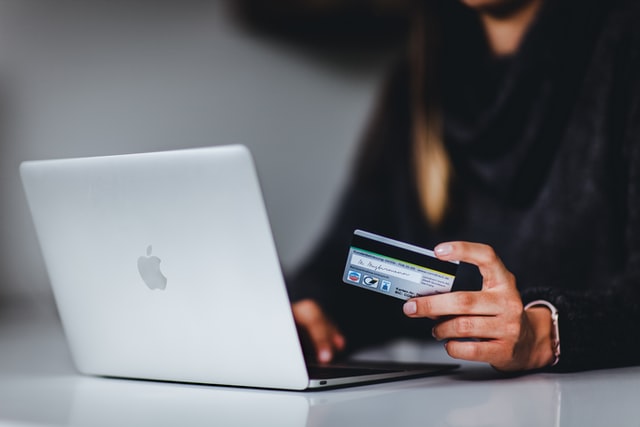What is better for shopping online: e-wallet payment or card payment?

There’s only one thing better than traditional retail therapy, and that’s shopping online. Moving from to store in an instant, with virtually no boundaries on where you can shop means you can order flip-flops from Rio de Janeiro, pret-a-porter from Paris and groceries from the local supermarket without leaving your couch.
When it comes to making a payment at the virtual check-out, cards and e-wallet payments are the two most popular methods of settling up. So what’s preferable, and why? Read on to find out more.
Convenience
E-wallets are one of those lifestyle changes that make you wonder how and why you ever managed without it. Replacing the traditional bump-in-your-pocket, weight-in-your-handbag wallet, going digital gives you access to your finances via your smartphone and enables everything from bill splitting on a Friday night to instant transfers to just about anywhere on the planet.
The UAE’s first fully-loaded e-wallet, payit, makes online shopping a pleasure. Budgets are easily managed, transactions trackable and payments securely made in an instant. payit has partnered with some of the region’s premium retail outlets, so discounts and deals can be unlocked and availed – from ordering cupcakes from a favourite restaurant to a new bird-feeder for your balcony.
Security: credit cards, debit cards and e-wallets
Between 2015 – 2020, reports of credit card fraud increased by a massive 161.7%. Essentially, there are two types of credit card fraud known as card present, where the physical card is being used without the knowledge of the owner, and card not present, a situation where the credit card number or data has been stolen.
Credit card companies continue to introduce new technologies to prevent against fraud, one of the most major changes being the introduction of the microchip in place of the magnetic strip.
Debit cards come with a lot of pros – you’re only spending what’s in your account and not at risk of overspending, but the security risks are considered higher compared to those of credit cards. Simply put, if your data is scraped during a transaction, any money stolen by fraudsters will come directly out of your account and is more difficult to replace. Credit card suppliers, on the other hand, protect users against fraud. Any financial loss that takes place as a result of fraud is much more easily recovered, and more of an inconvenience than anything else.
E-wallets aren’t completely without risk: users and providers must take certain precautions to protect consumer data and their finances. Going digital however, does reduce damage to your data. Even if a credit card is linked to your e-wallet, when an online purchase is made, the actual card number is never shared or sent across a network. Rather, the information is ‘tokenized’, so you can still use a credit card, and be comfortable with the reduced amount of risk.
Users of e-wallets can do their bit by keeping an eye on financial statements, enabling two-step authentications to prevent unauthorized access, ensure SSL encryption is activated, and only ever using apps they trust.



![Photo of 14 Best CPU Temperature Monitor Tools for Windows 11/10 [FREE]](https://www.latestgadget.co/wp-content/uploads/2024/04/christian-wiediger-8WFcelVBOoI-unsplash-390x220.jpg)
